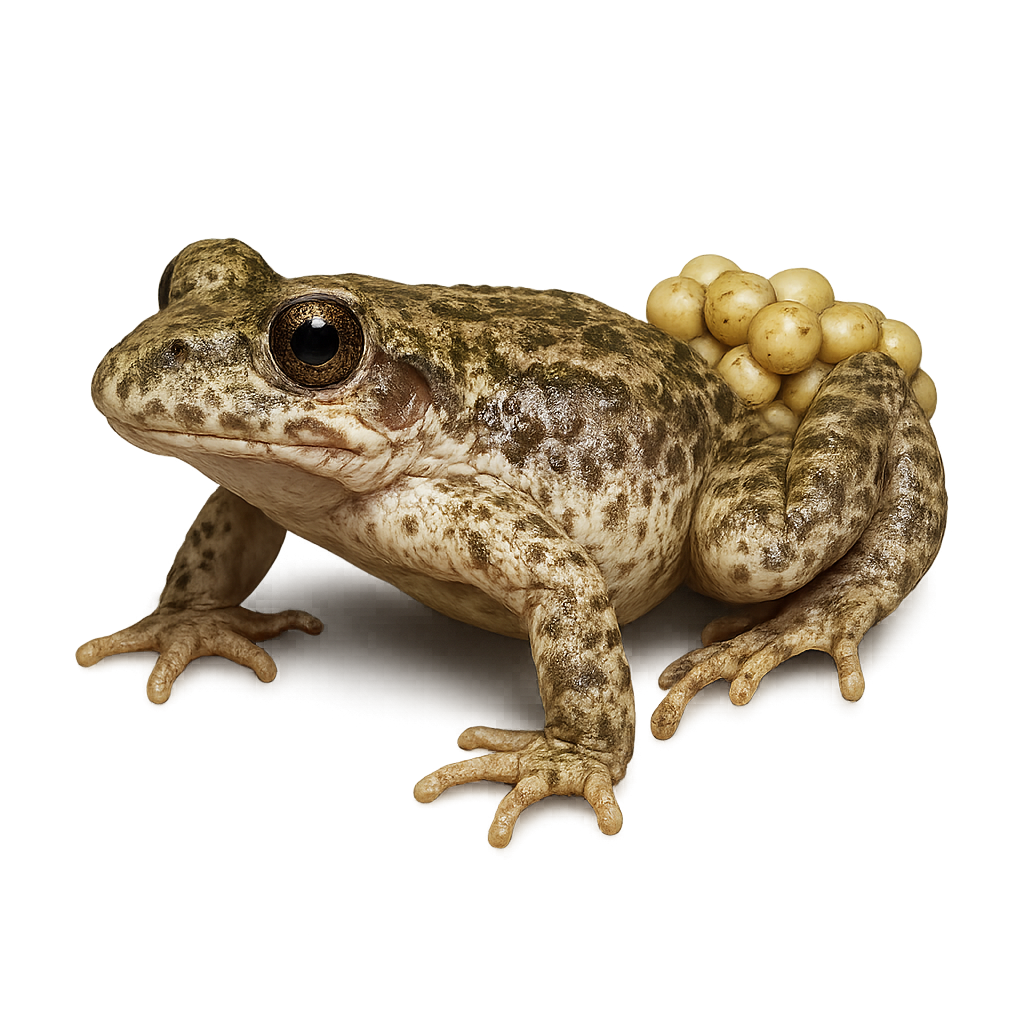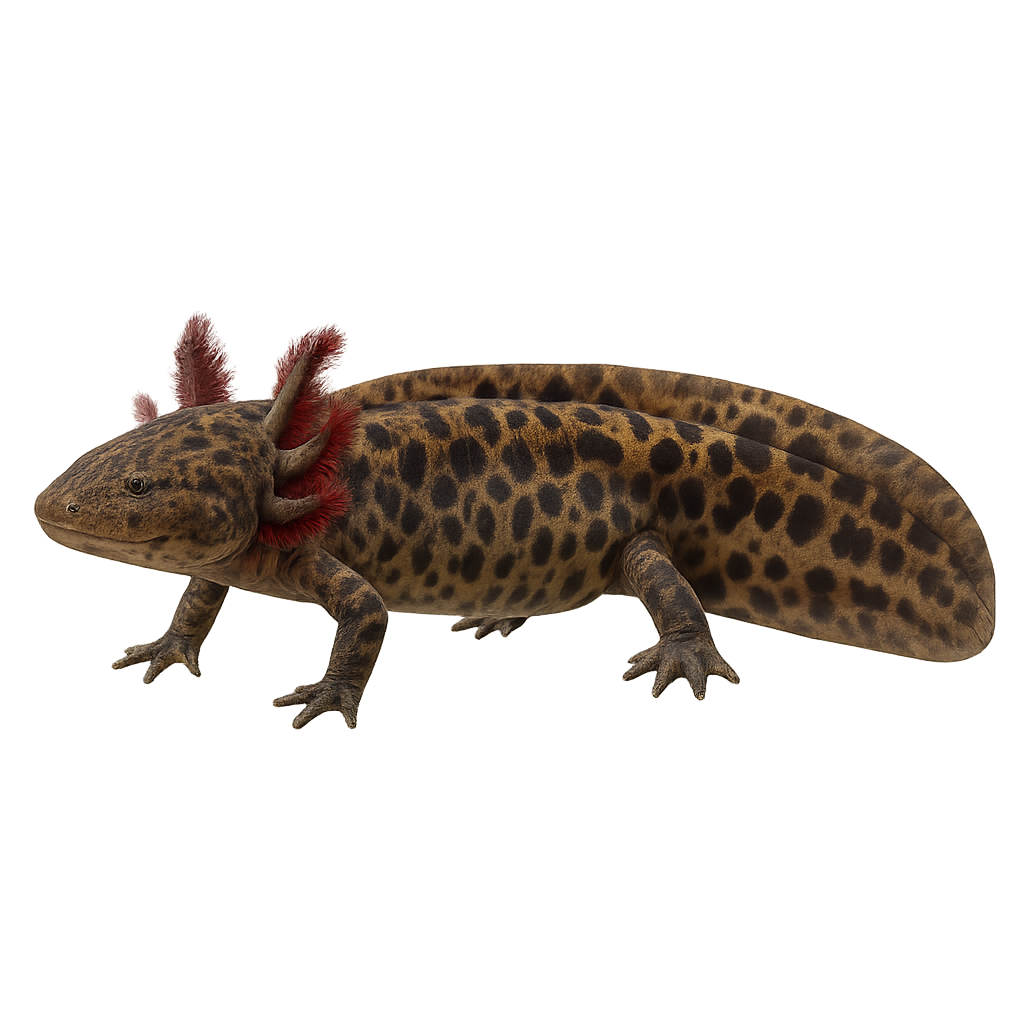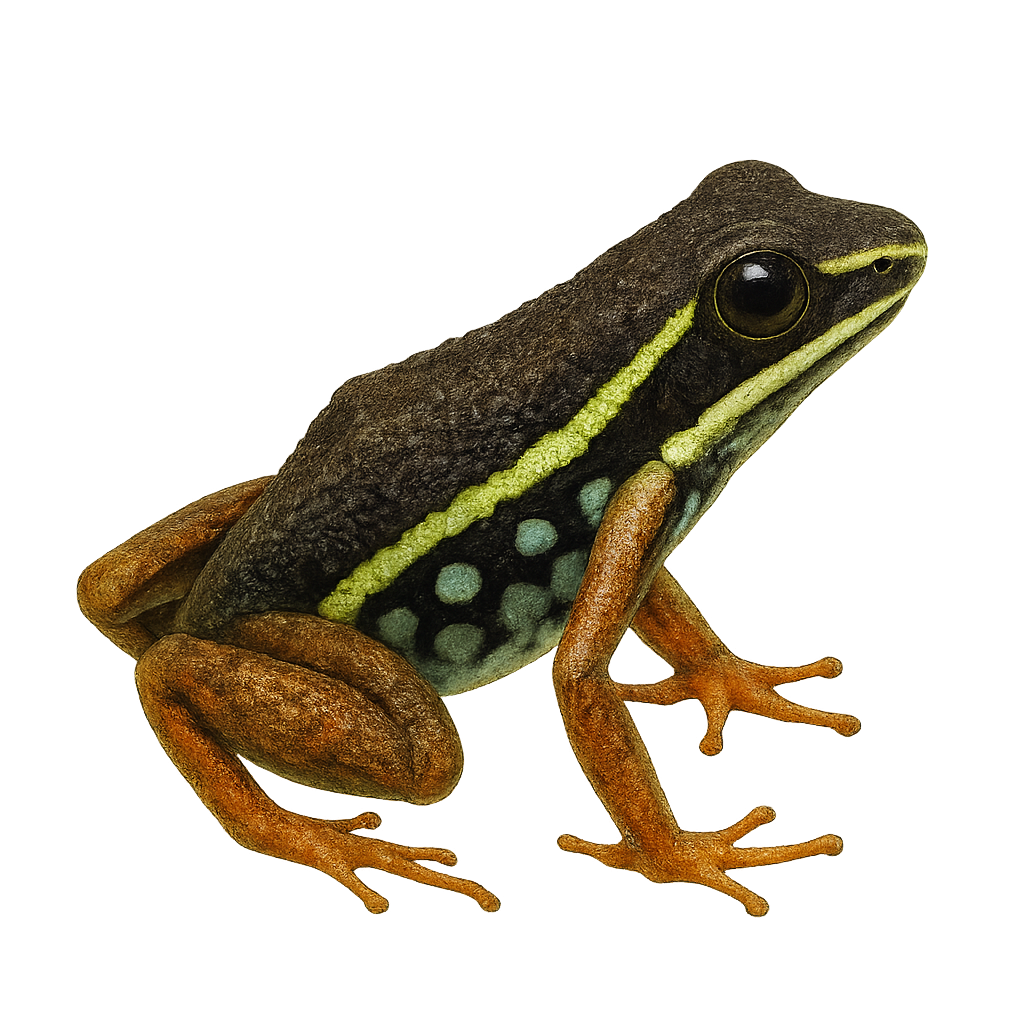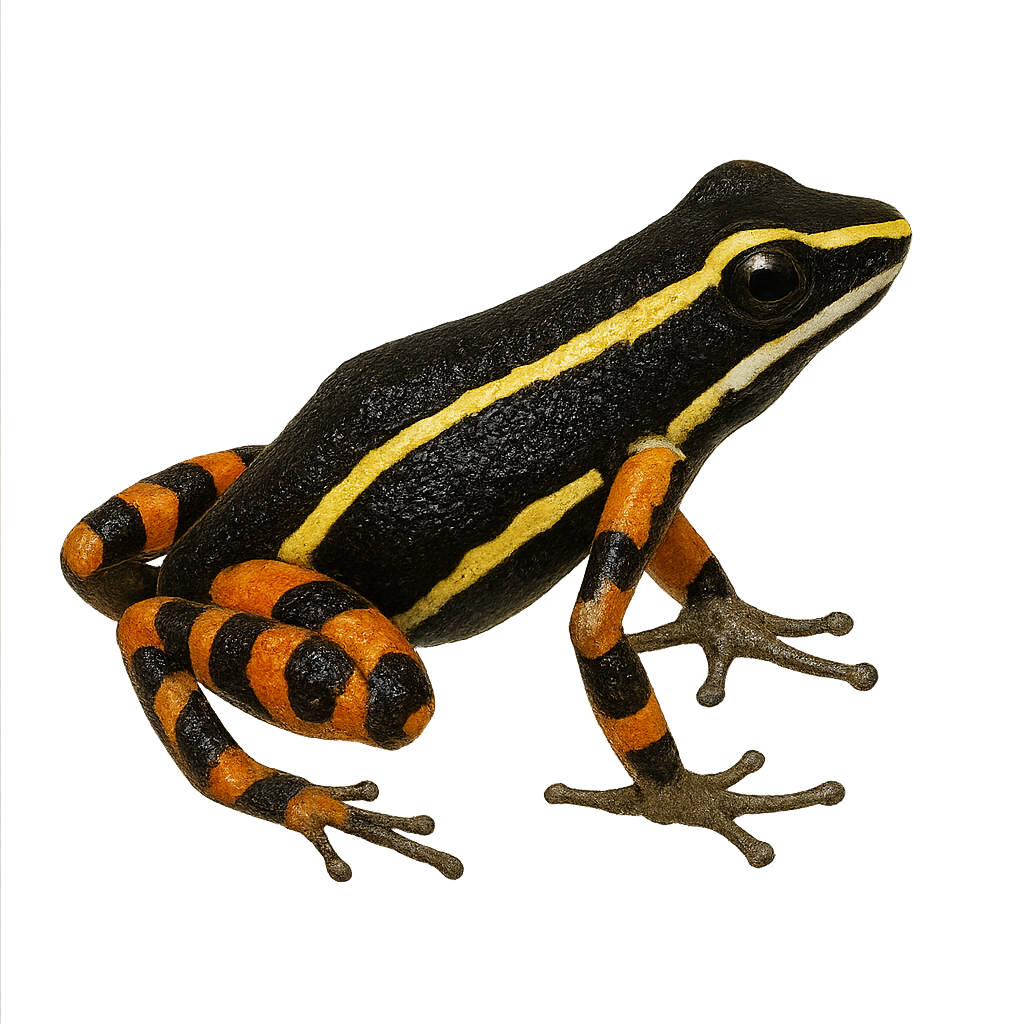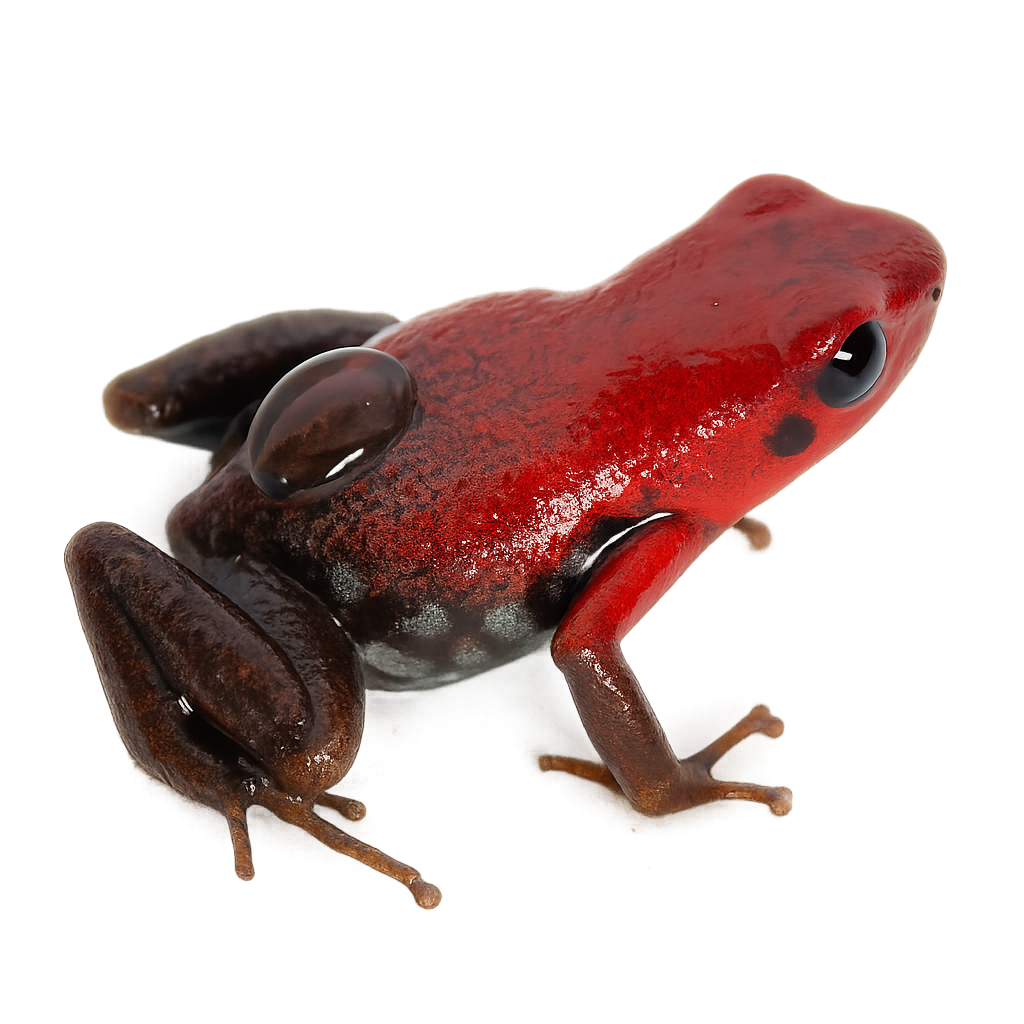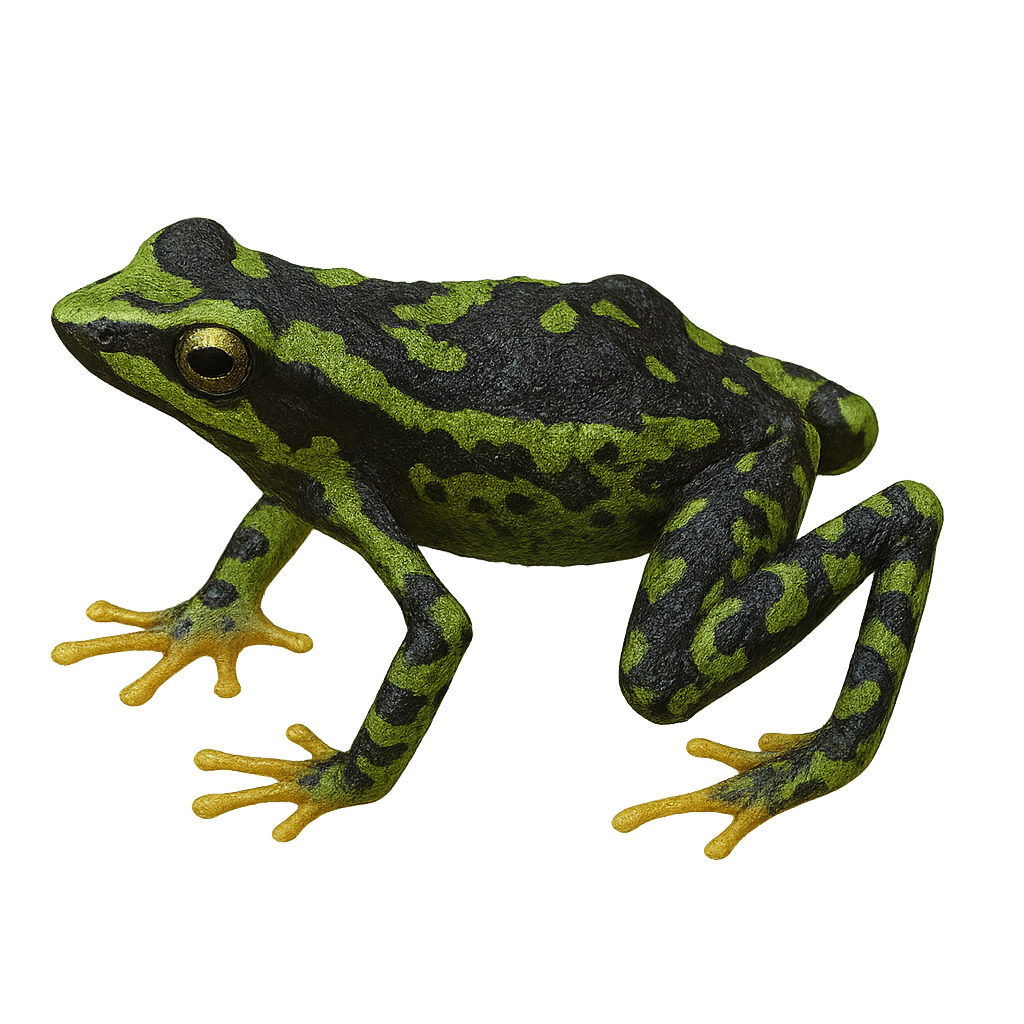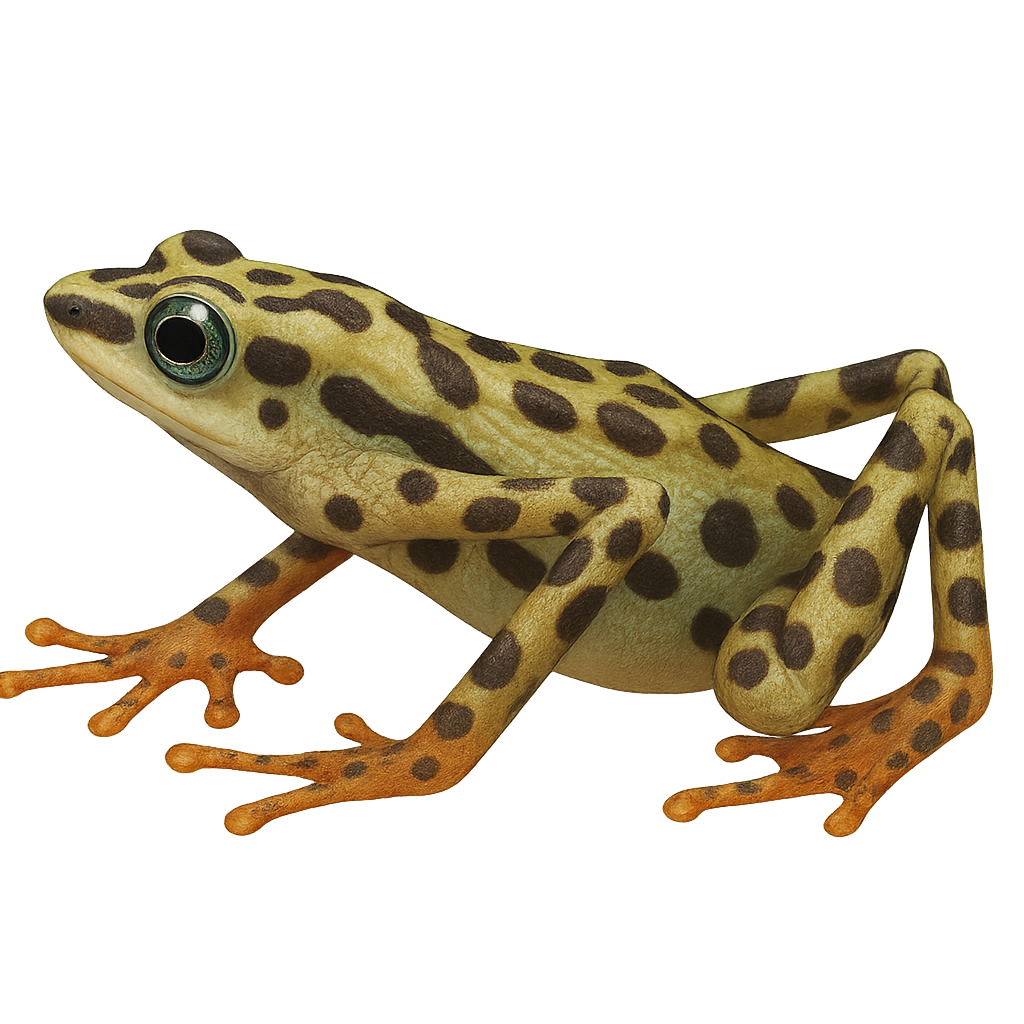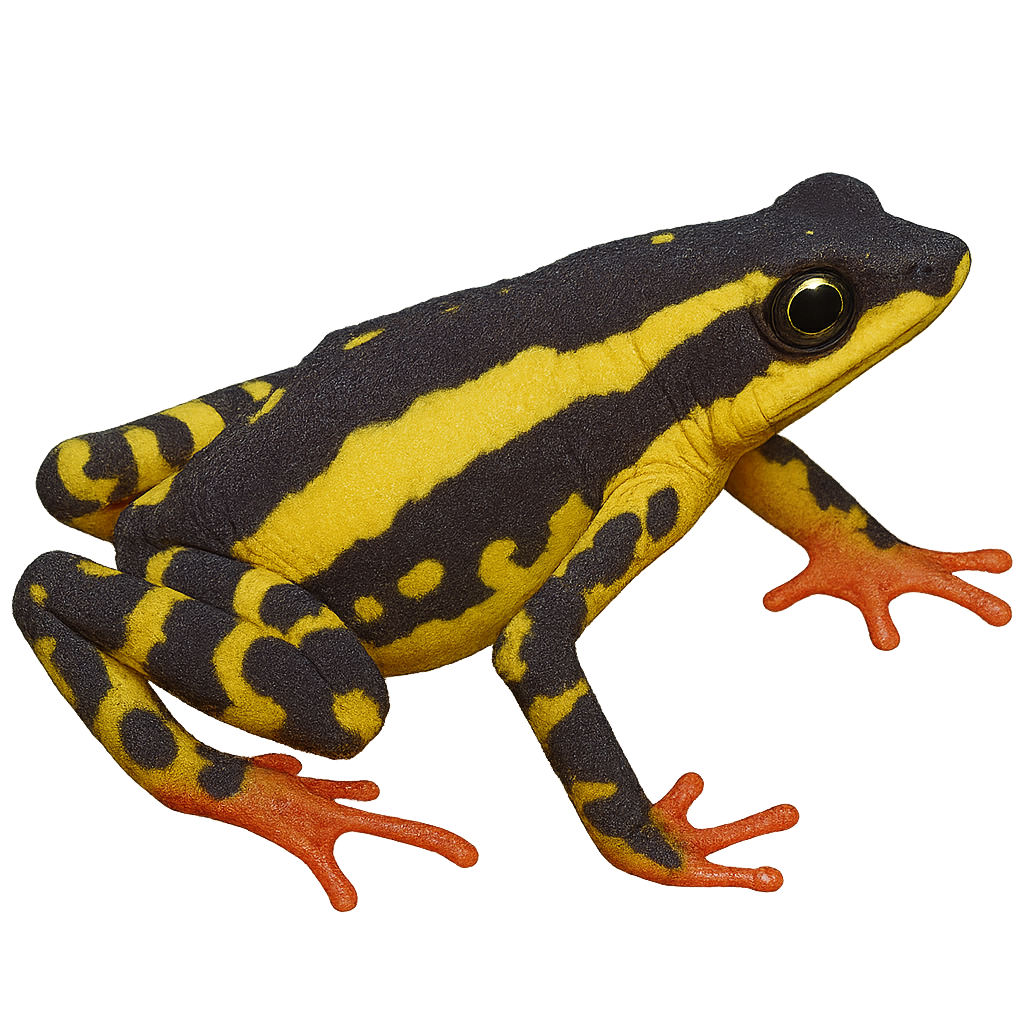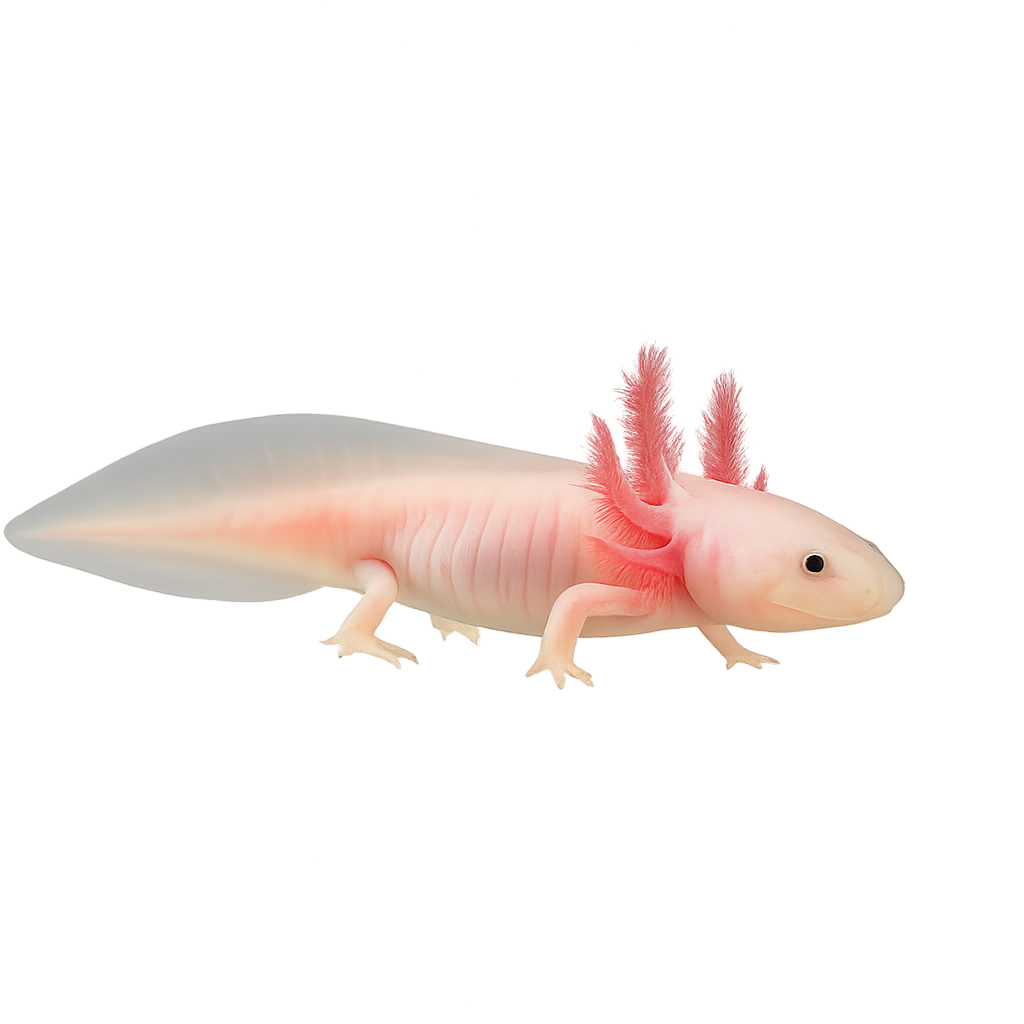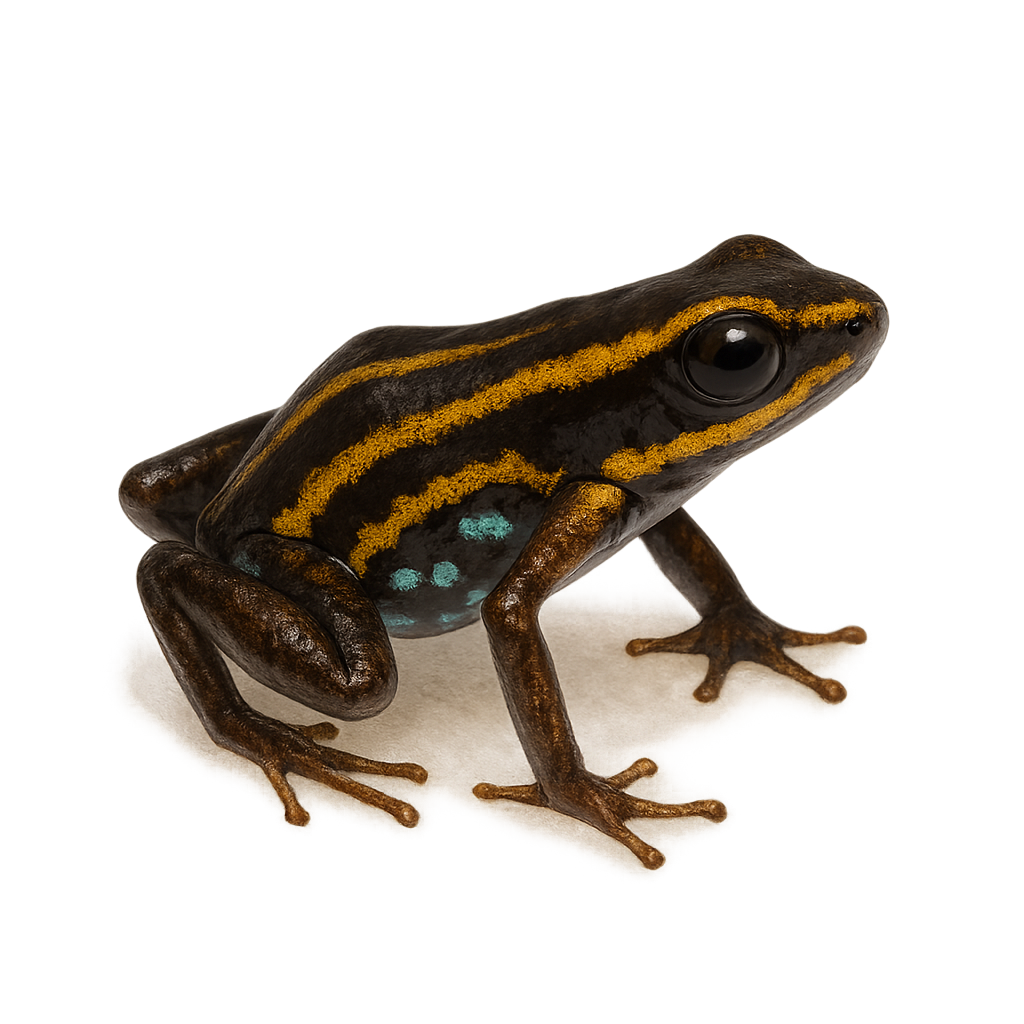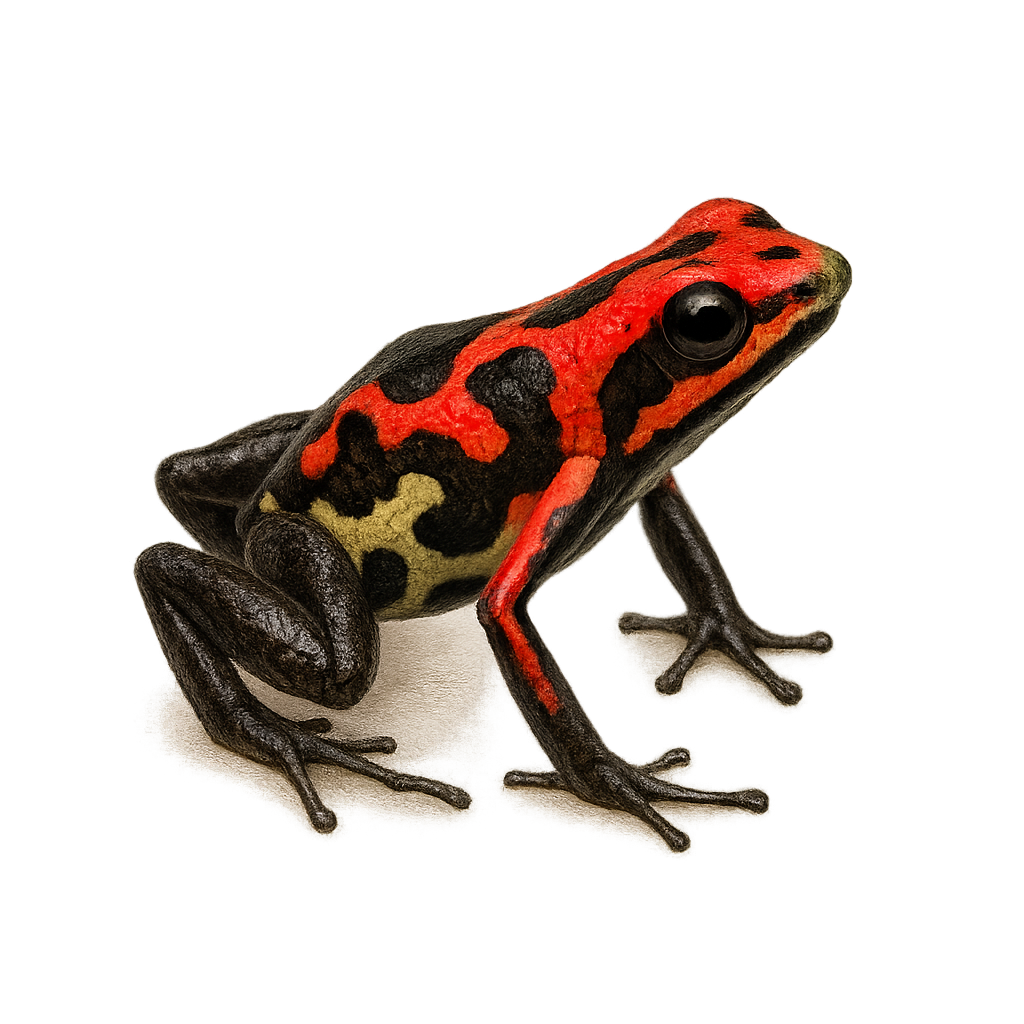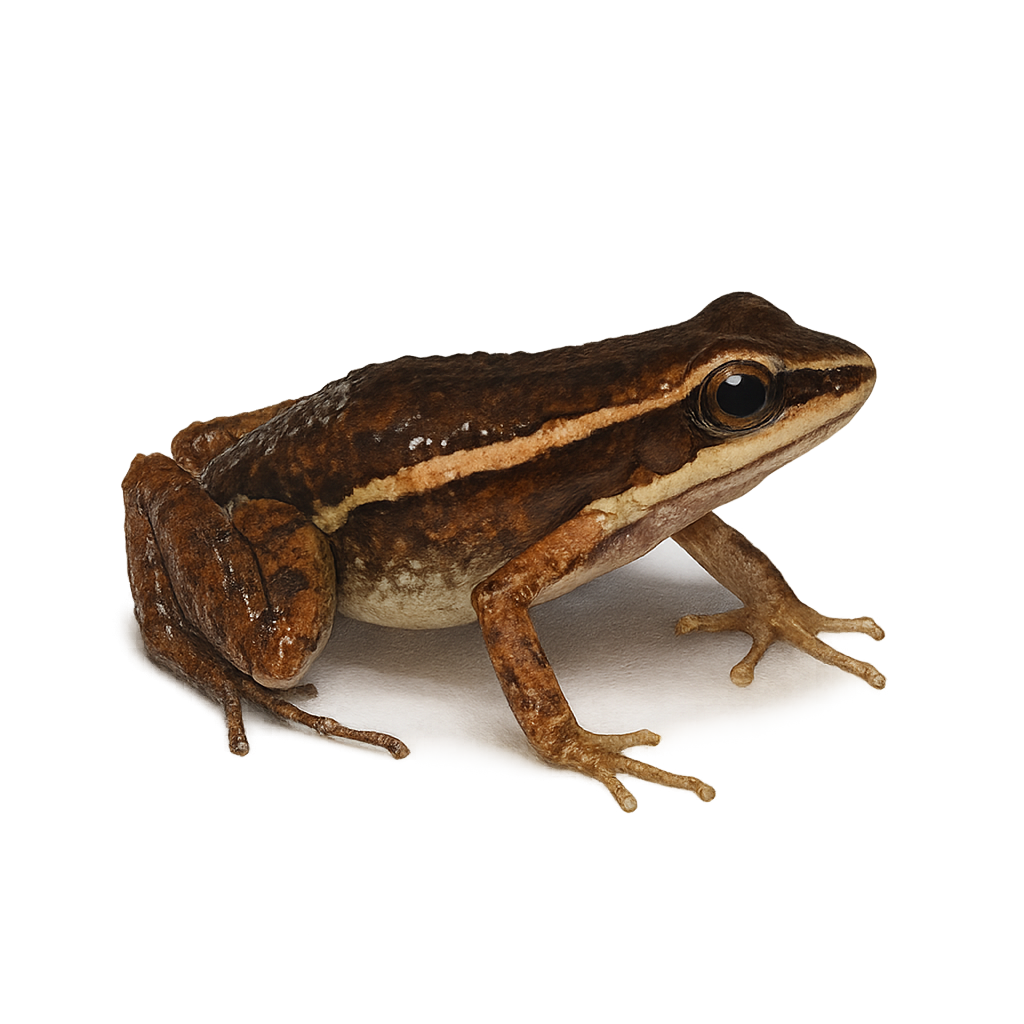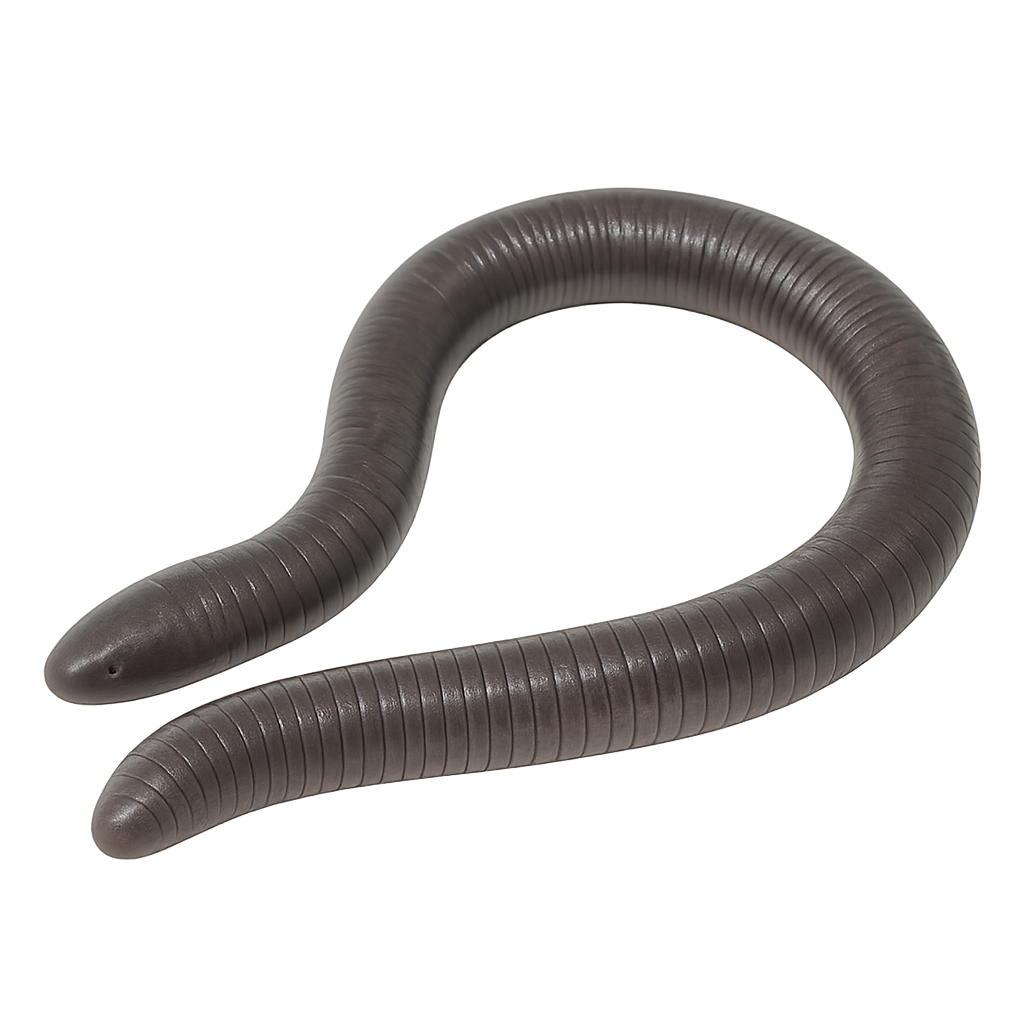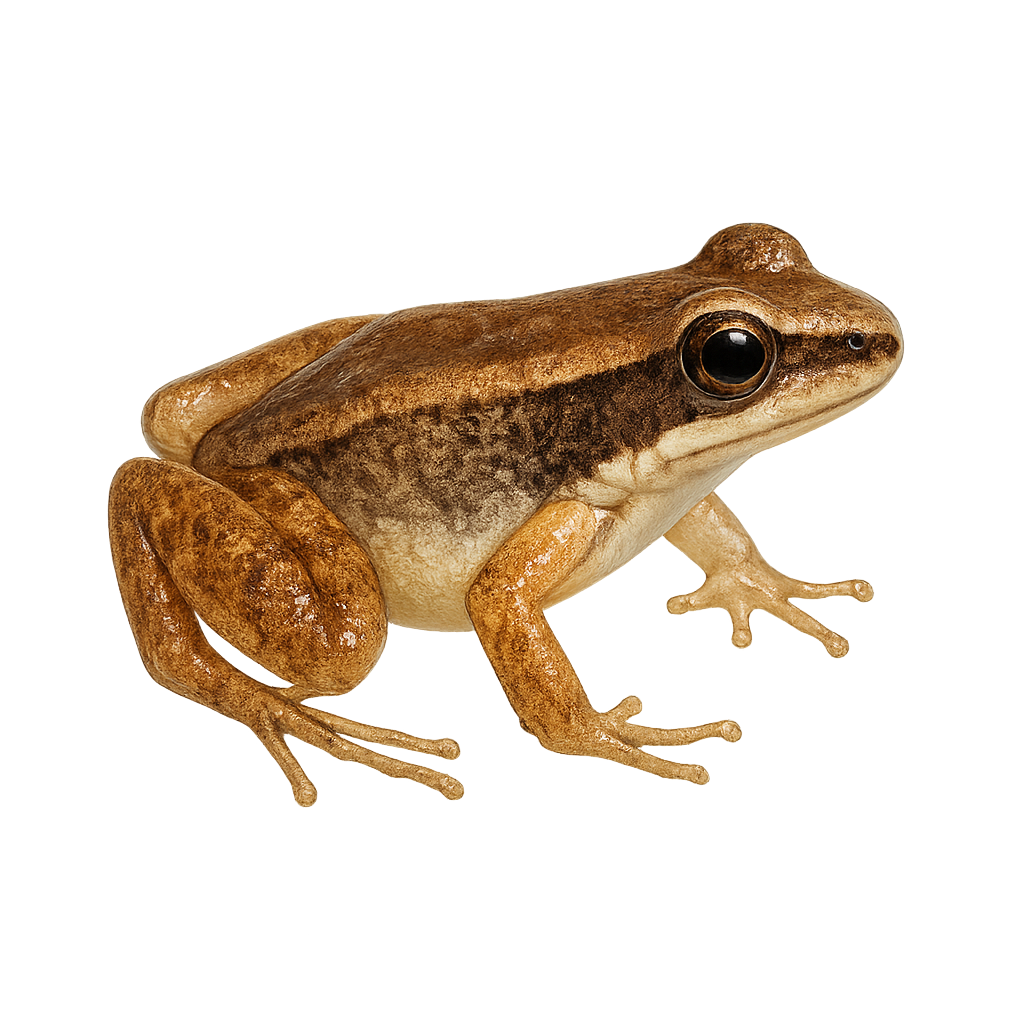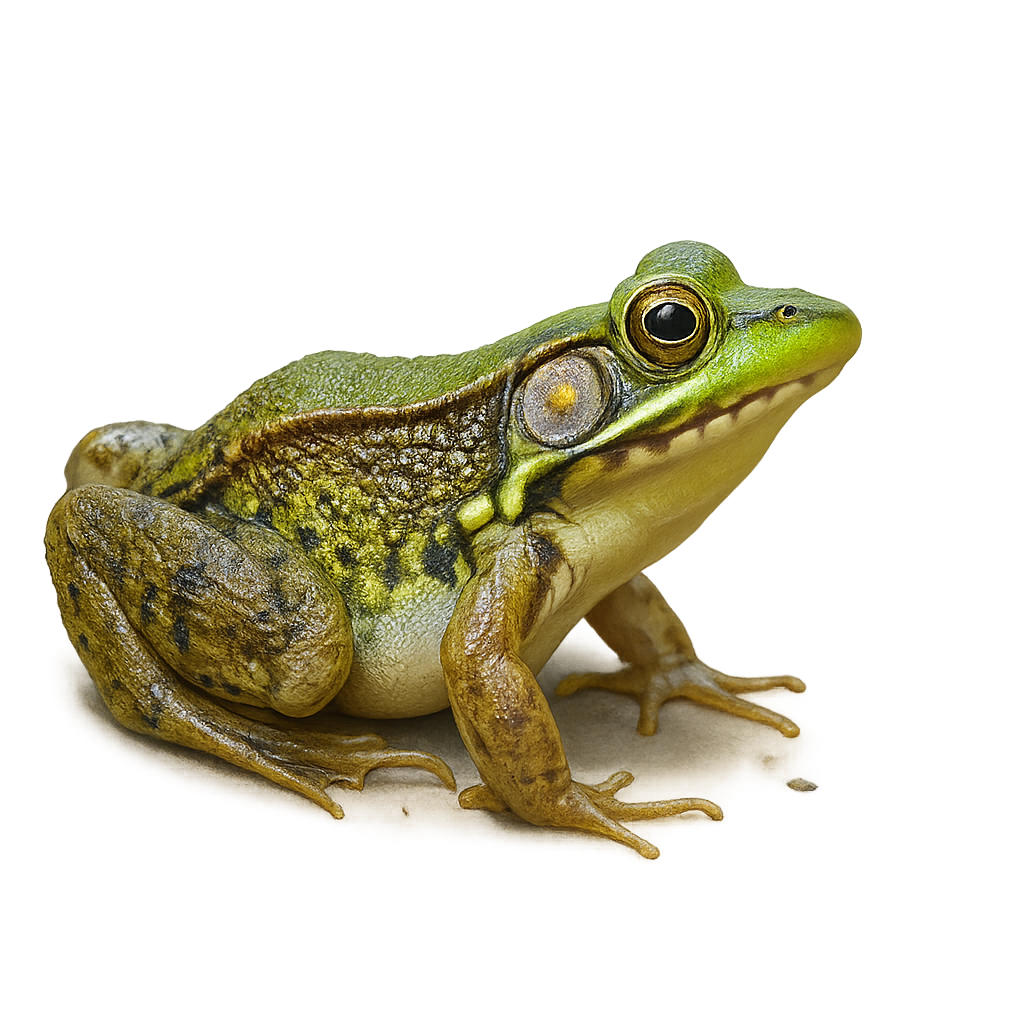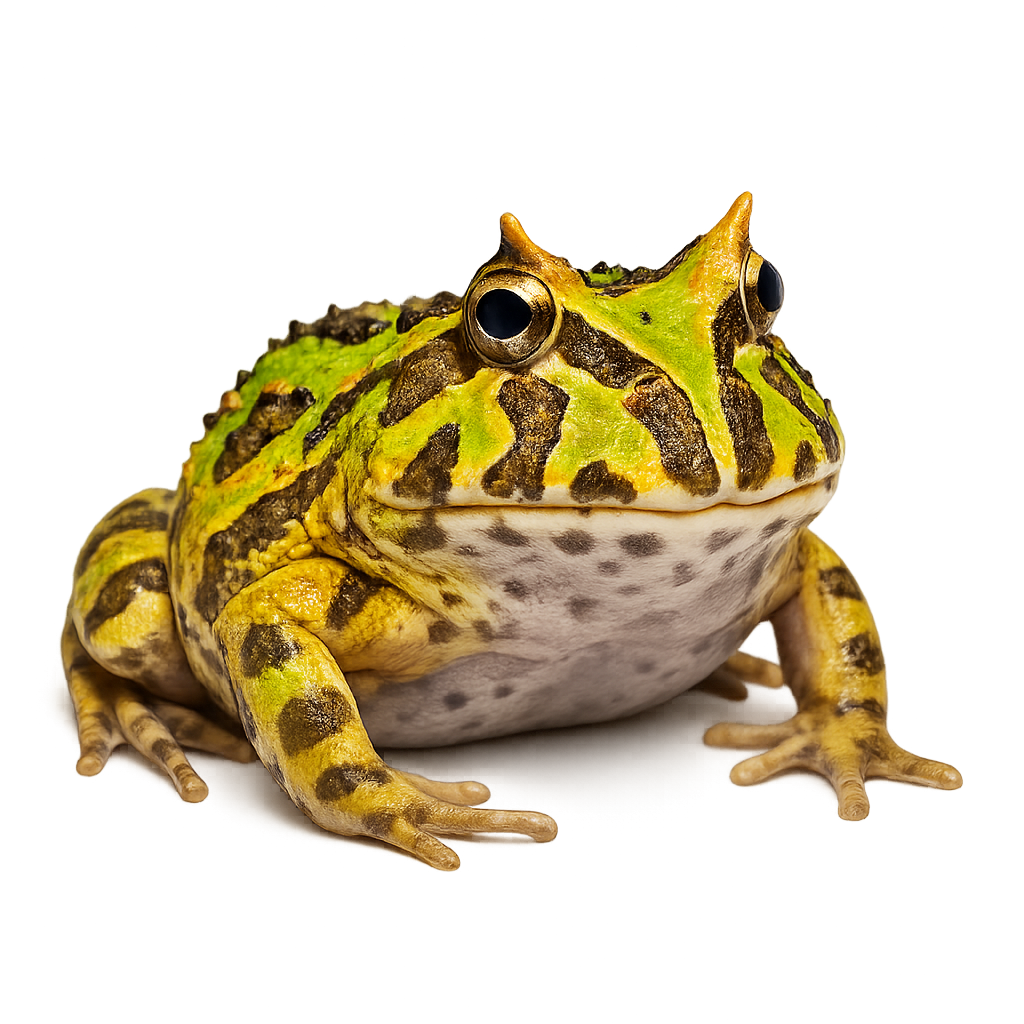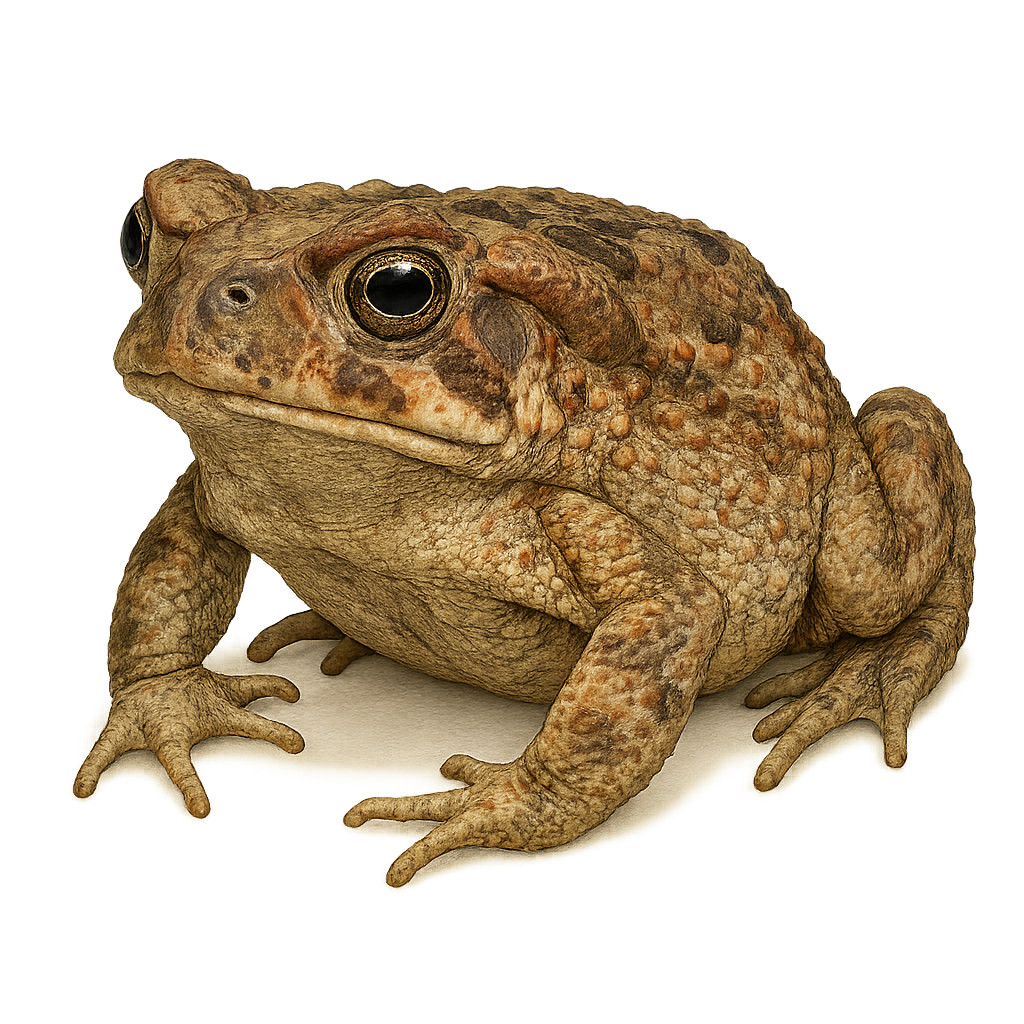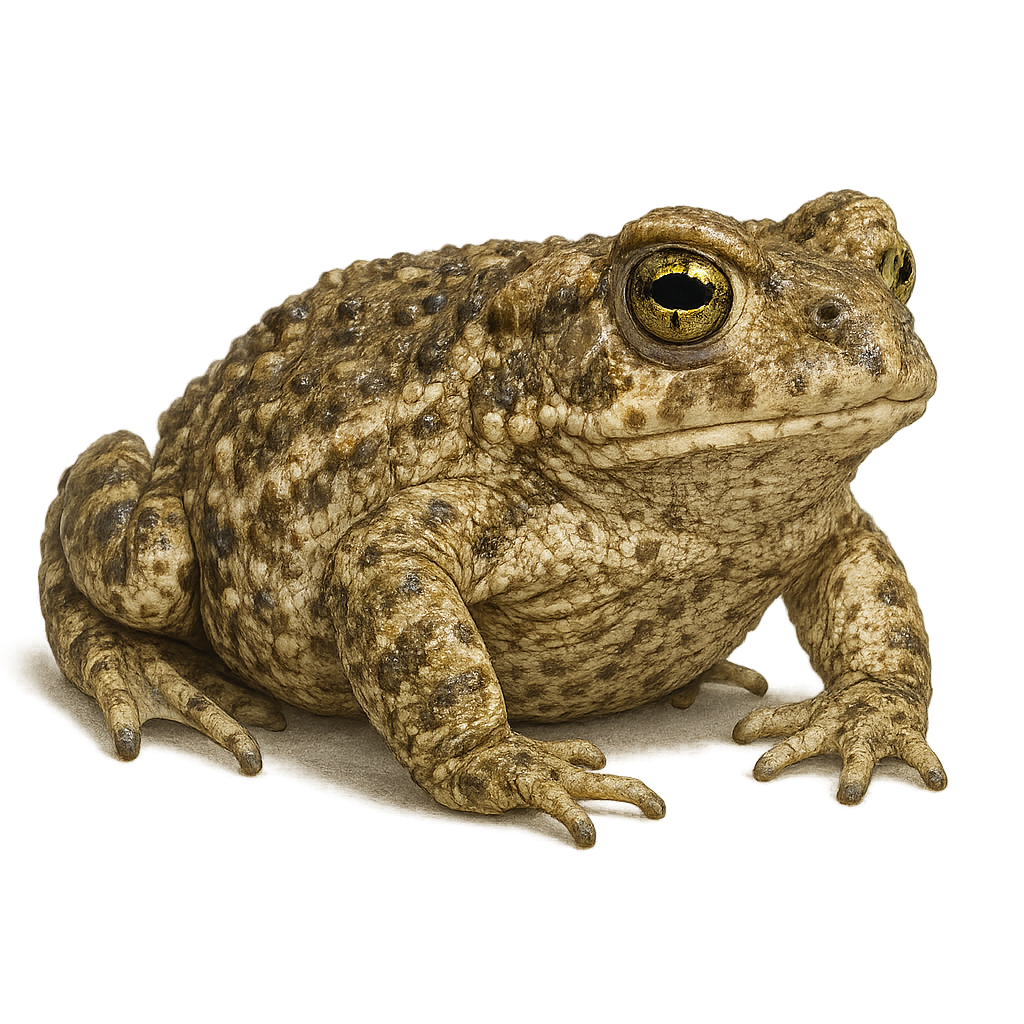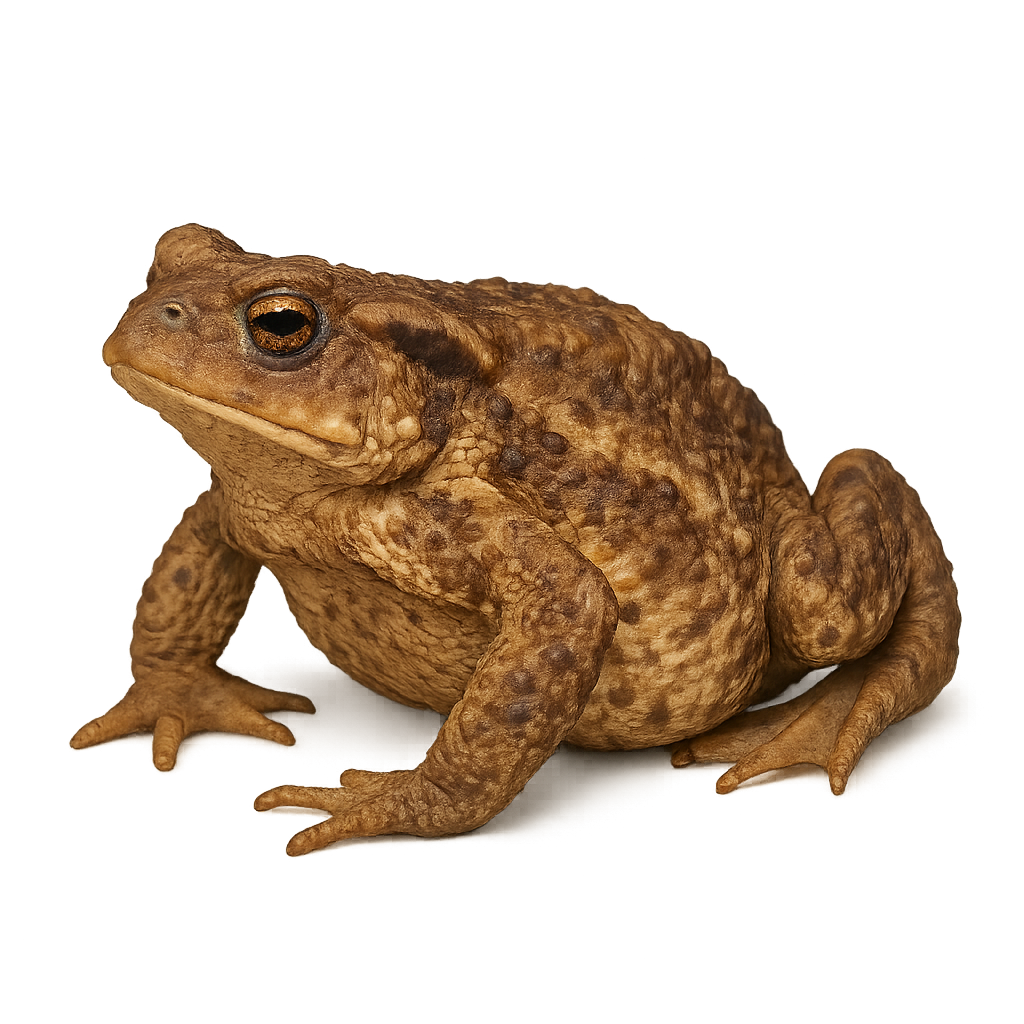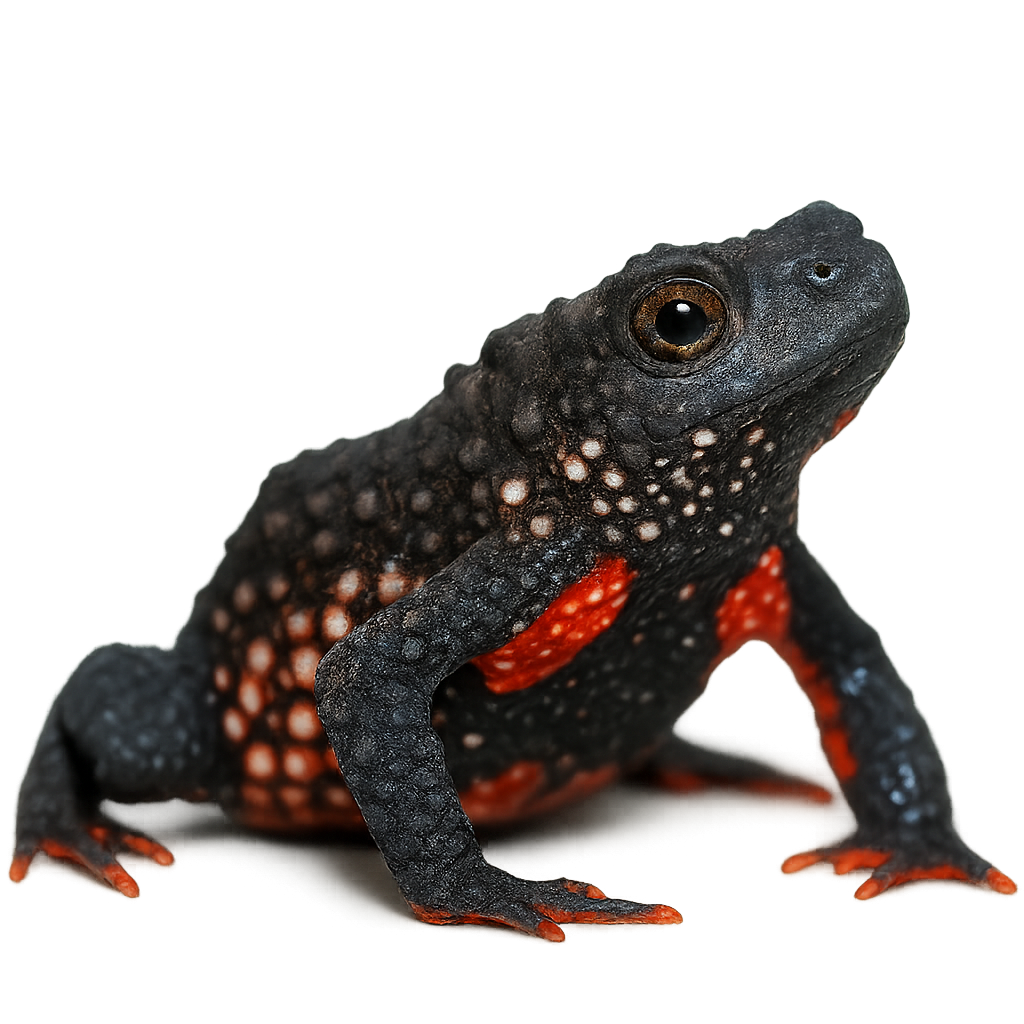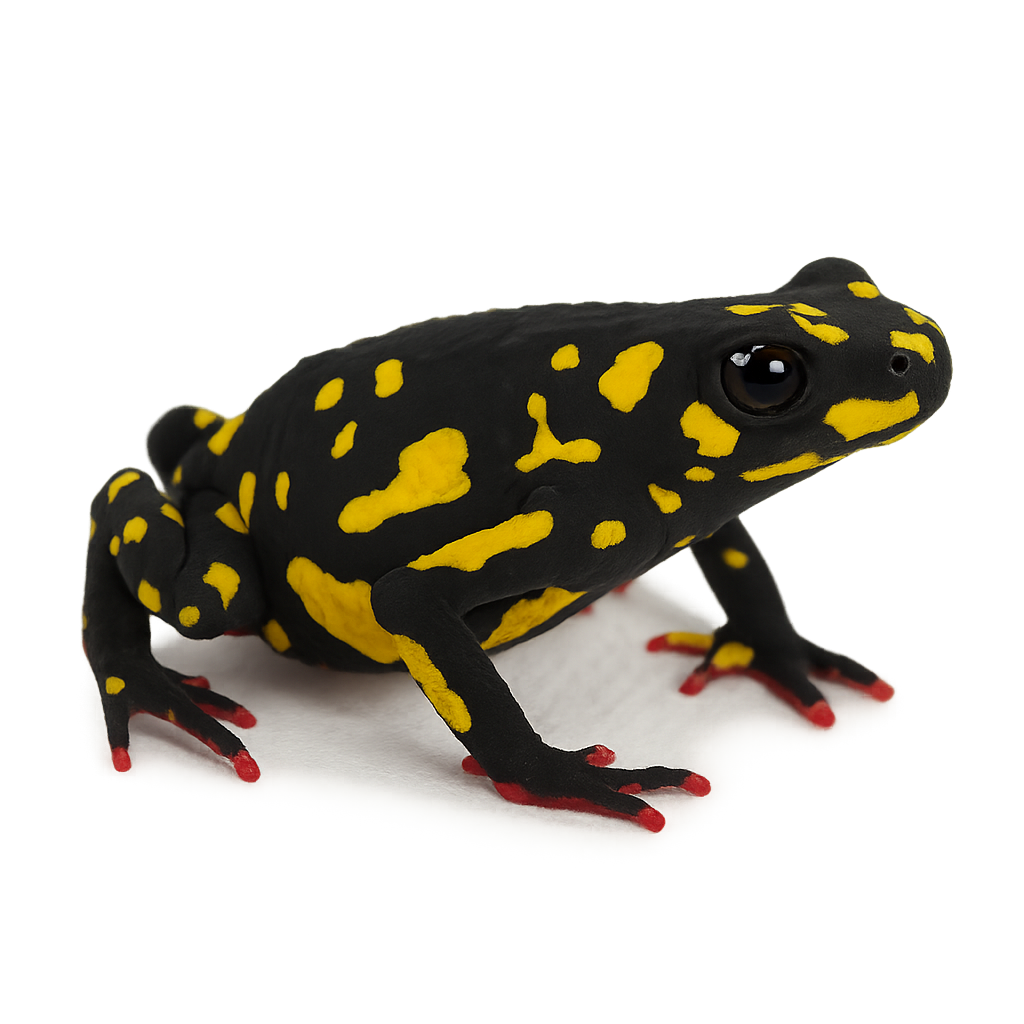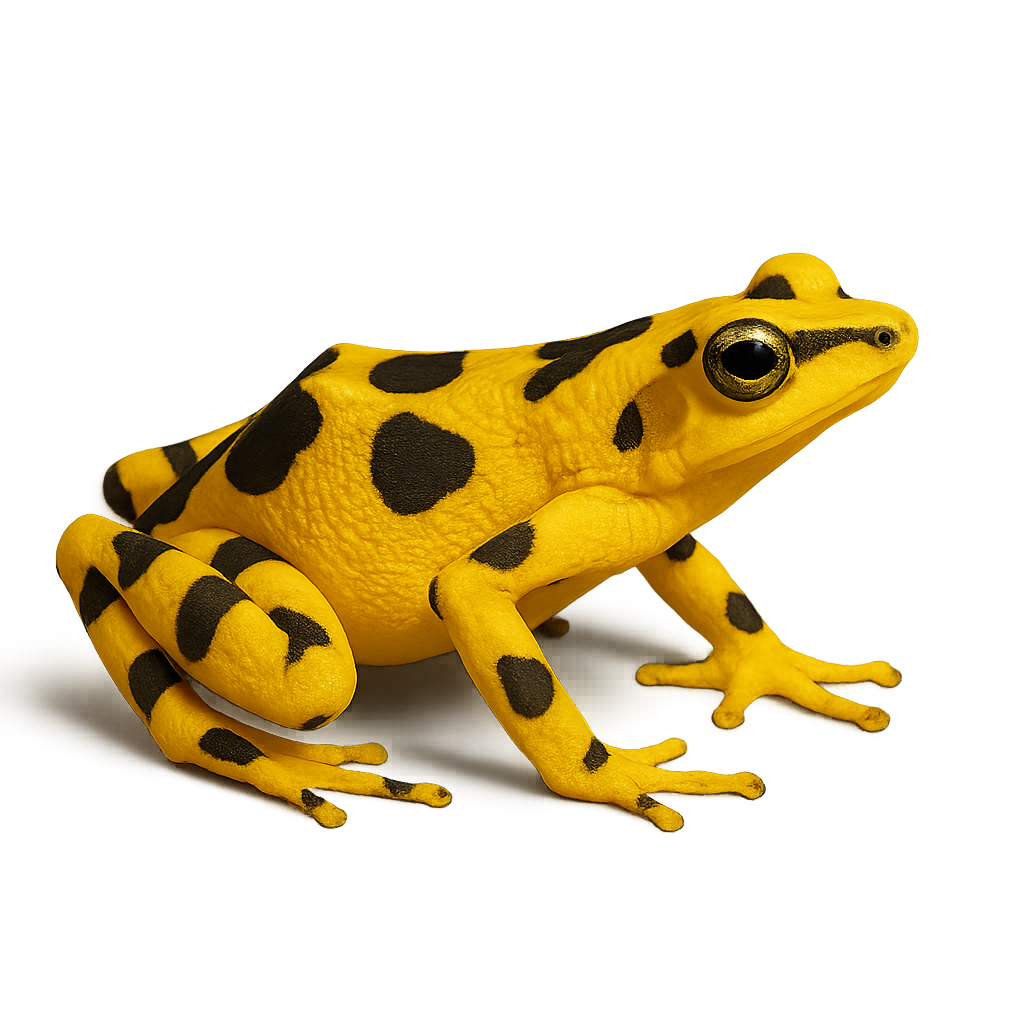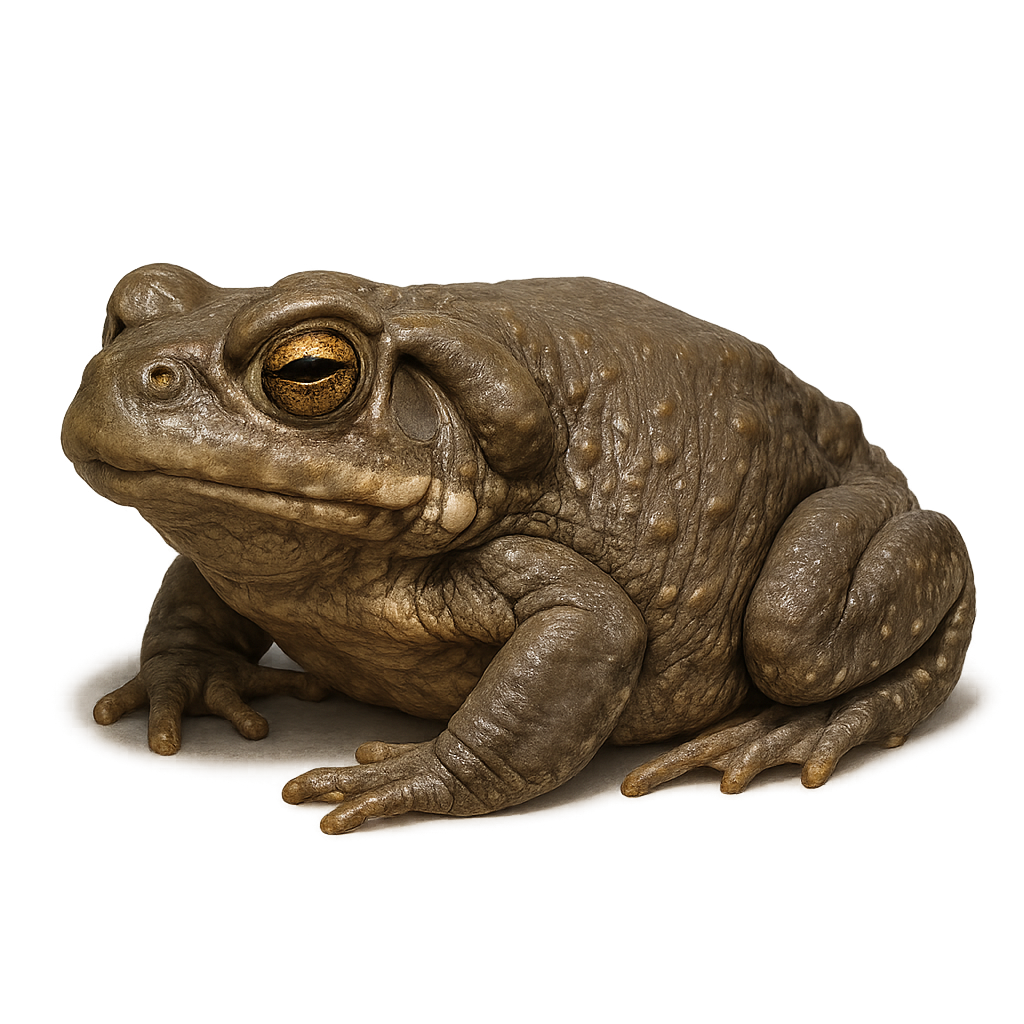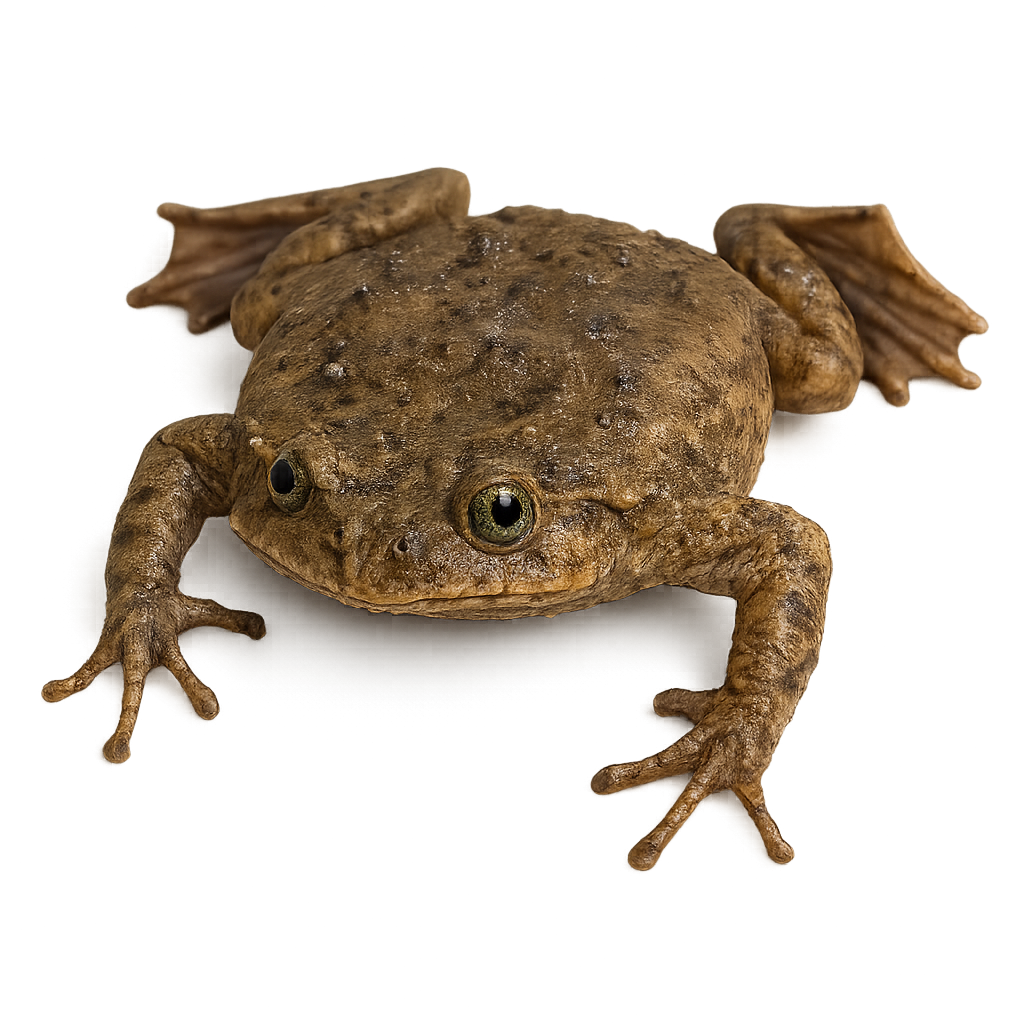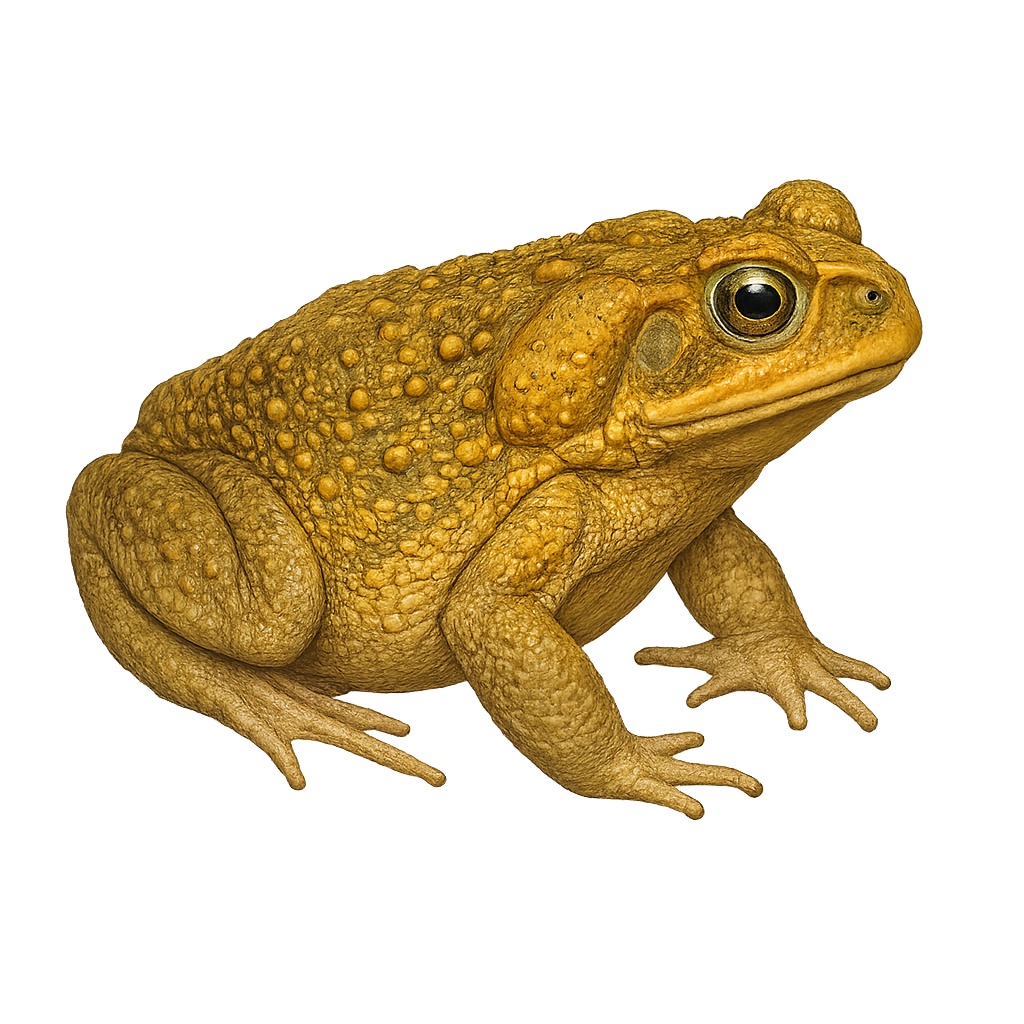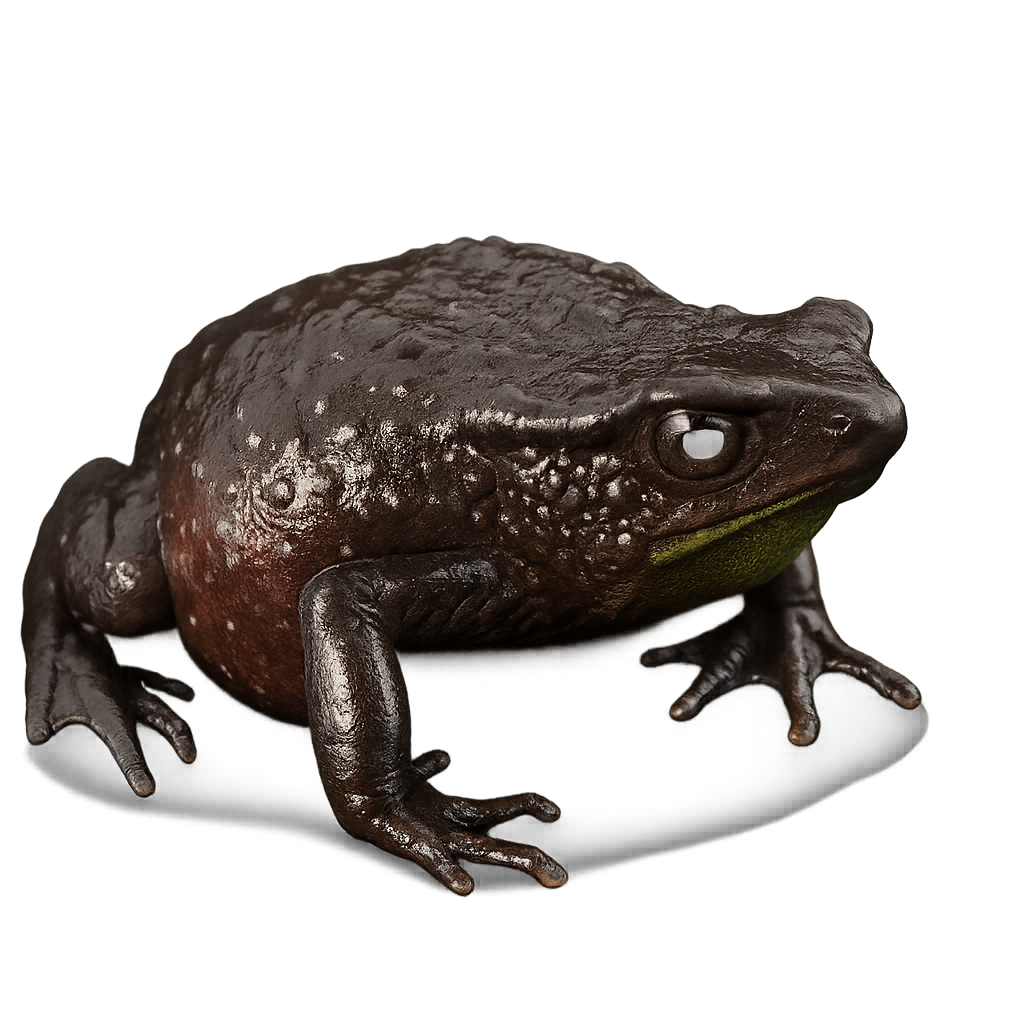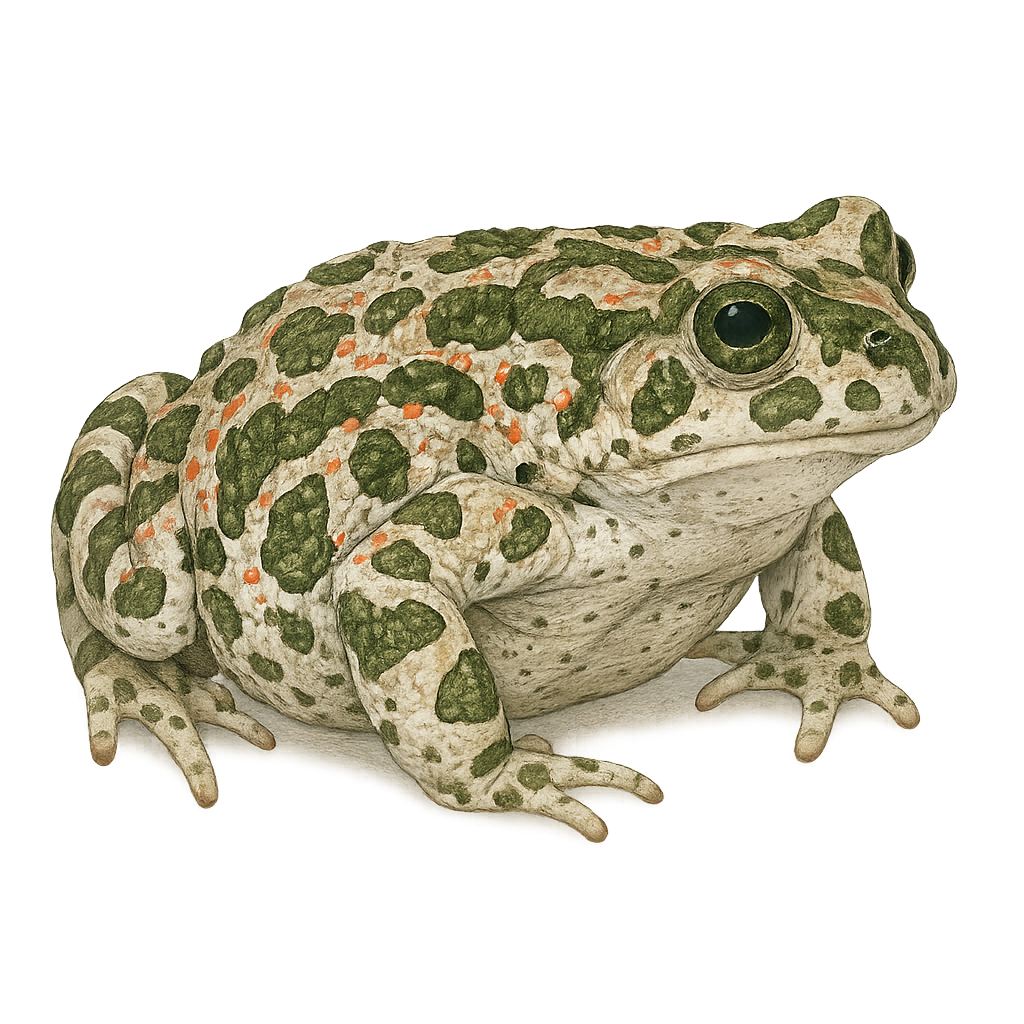The common midwife toad is a stocky amphibian of 5–6 cm, with smooth olive-grey dorsal skin and a spotted throat. A terrestrial species of temperate Europe, it inhabits forest edges, meadows and urban areas near water bodies, where females lay eggs that males carry in strands until hatching.
The Fisher’s salamander is an urodele amphibian endemic to the Lake Pátzcuaro basin (Michoacán, Mexico). It inhabits hot springs, marshes and wet meadows at 2030–2120 m elevation. Strictly nocturnal, it feeds on aquatic insects and small crustaceans. During the breeding season (July to September), males become territorial and perform body-undulation displays before egg‐laying.
The Ameerega ignipedis, commonly known as the Fire-legged Poison Frog, is a brightly colored frog species native to the humid tropical forests of South America. It is particularly recognizable by its vivid red legs, which contrast with its black or dark brown body. This diurnal frog is often observed on the forest floor, where it primarily feeds on small insects. Although its bright coloration serves as a warning to potential predators, indicating its toxicity, it is nonetheless vulnerable to habitat loss due to deforestation. Its reproduction typically occurs during the rainy season when conditions are ideal for tadpole development.
The Ameerega braccata is a captivating species belonging to the Dendrobatidae family. Native to the tropical rainforests of South America, it is renowned for its vibrant colors and intriguing behavior. This diurnal species thrives in humid environments, such as undergrowth and areas near water bodies, and primarily feeds on small insects and invertebrates. Although its conservation status is not currently alarming, deforestation and habitat loss pose potential threats. Reproduction typically occurs during the rainy season when conditions are optimal for tadpole development.
The Andean poison frog is a small, brightly colored frog, predominantly black with red or yellow spots, inhabiting the humid tropical forests of Colombia. Measuring about 2 to 3 cm, this species is known for its toxic skin, a natural defense against predators. It primarily feeds on small insects and arthropods. Males are territorial and use vocalizations to attract females and ward off rivals. Their reproduction involves parental care, with the male carrying tadpoles on his back to suitable water points. This species is threatened by deforestation and habitat loss, leading to its classification as vulnerable by the IUCN.
The Atelopus planispina, known as the Flat-spined Atelop, is a rare and fascinating amphibian endemic to the humid tropical forests of Ecuador. This toad is distinguished by its smooth skin and vibrant colors, ranging from green to yellow with black patterns. It typically measures between 3 and 5 cm in length. Adapted to terrestrial life, it prefers areas near water bodies where it can breed. Unfortunately, this species is threatened by habitat loss due to deforestation and climate change. Conservation efforts are crucial for its survival. Due to its rarity and beauty, it is often sought after by photographers and naturalists.
The Atelopus balios is a species of toad belonging to the Bufonidae family. This toad is endemic to Ecuador, where it primarily inhabits humid montane forests. It is characterized by its smooth skin and bright colors, often a mix of green, yellow, and black, which allow it to blend into its natural environment. Unfortunately, this species is critically endangered due to habitat loss, pollution, and fungal diseases such as chytridiomycosis. Conservation efforts are crucial to ensure the survival of this unique species.
The Atelopus tricolor, commonly known as the Bolivian Stubfoot Toad, is a species of toad belonging to the Bufonidae family. Native to the humid tropical forests of Ecuador, this small amphibian is easily recognizable by its brightly colored skin, often adorned with yellow, green, and black patterns. Typically measuring between 3 and 5 cm, it is known for its ability to blend into its surroundings to evade predators. Unfortunately, this species is critically endangered due to habitat loss and fungal diseases affecting many amphibian populations. Conservation efforts are crucial to ensure its survival.
The Axolotl is a fascinating species of amphibian native to lakes around Mexico City, Mexico. Unlike most other amphibians, the Axolotl retains its juvenile form throughout its life, a phenomenon known as neoteny. It is famous for its exceptional ability to regenerate parts of its body, including limbs, internal organs, and even its heart. It has a distinctive appearance with its pale pink skin and external gills, giving it the appearance of a small aquatic dragon. The Axolotl primarily lives in cold, deep waters of lakes, where it feeds on small invertebrates.
The Blue‑bellied poison frog, or Andinobates minutus, is a small, brightly colored frog native to the tropical rainforests of Colombia and Panama. Known for its vivid, toxic skin, it serves as a defense mechanism against predators. Typically measuring between 12 and 17 mm, this species displays hues ranging from blue to red, often with distinctive black patterns. It primarily inhabits leaf litter and feeds on small insects and arthropods. The Minute Poison Frog is diurnal, being active mainly during the day. Although its population is stable, it faces threats from deforestation and habitat loss.
The Cauca poison frog is a small, brightly colored frog native to the humid rainforests of Colombia. Its skin features vivid and contrasting patterns, often red and black, serving as a warning to potential predators of its toxicity. This diurnal species primarily feeds on small insects and other arthropods, playing a crucial role in the ecosystem by regulating insect populations. Harlequin Poison Frogs are known for their territorial behavior, with males vigorously defending their space against intruders. Their reproduction involves parental care, with males carrying tadpoles on their backs to suitable water points. Unfortunately, this species is threatened by deforestation and habitat loss.
The Cauca poison frog is a small frog from the Dendrobatidae family, native to the humid tropical forests of South America. It is characterized by its smooth skin and bright colors, often a mix of green and brown, which allow it to blend effectively into its natural environment. This species is generally active during the day and primarily feeds on small insects. It is known for its territorial behavior, with males vigorously defending their space against intruders. Reproduction mainly occurs during the rainy season when conditions are optimal for tadpole development.
The Dermophis mexicanus, or Mexican burrowing caecilian, is a burrowing amphibian characterized by its elongated, limbless body, resembling an earthworm. Its smooth, segmented skin allows it to move easily underground. Primarily nocturnal, this species feeds on small invertebrates found in the soil. It has keen senses to detect prey in the dark. Mexican caecilians inhabit moist environments, often near rivers or in tropical forests. They are ovoviviparous, meaning the young develop in eggs inside the mother's body until hatching. Though discreet, they play a crucial role in the ecosystem by regulating invertebrate populations.
The Palm rocket frog is a small, colorful frog native to the humid tropical forests of South America, particularly in Colombia and Ecuador. It is characterized by its smooth skin and vibrant color patterns, ranging from brown to green with black spots. This species is primarily terrestrial, although it is often found near water bodies where it breeds. Males are known for their distinctive calls, which play a crucial role in attracting females. The Palmate Rocket Frog is diurnal, meaning it is active during the day. It primarily feeds on small insects and other invertebrates. Although its population is stable, it is threatened by deforestation and habitat loss.
The Common rocket frog, scientifically known as Colostethus inguinalis, is a small amphibian species distinguished by its vibrant coloration. It features a bright yellow belly contrasting with a brownish back, often speckled with dark spots. This frog is primarily terrestrial and inhabits the humid tropical forests of Central and South America. It is often observed near water bodies where it breeds. Its distinctive call is an essential means of communication, especially during the breeding season. Although discreet, it plays a crucial role in the ecosystem by regulating insect populations.
The Desert Horned Frog is an amphibian species found in the dry, sandy regions of South America, particularly in Argentina, Paraguay, and Uruguay. This toad is easily recognized by the large 'horns' above its eyes, giving it an imposing appearance. It is primarily terrestrial and often hides in the sand or under dead leaves to protect itself from the daytime heat. This frog is a voracious predator, using its large mouth to capture prey as large as small mammals or other amphibians. It is primarily nocturnal and waits until nightfall to hunt.
The cane toad (Rhinella marina) is a robust amphibian reaching up to 23 cm in total length, with a stocky body covered in rough, warty skin colored olive to deep brown. Native to tropical wetlands of Central and South America, it inhabits marshes, rice fields, slow-flowing streams and roadside ditches, preying on insects, spiders and small vertebrates. An invasive species introduced across multiple continents, it secretes potent skin toxins to deter predators. Males vocalize in resonant choruses during the rainy season. Breeding occurs in large communal pools, where females deposit thousands of eggs in gelatinous strings that hatch in two to five days. After hatching, tadpoles metamorphose rapidly and juveniles may live over ten years.
The natterjack toad, Epidalea calamita, is a medium-sized amphibian known for its warty skin and distinctive yellow dorsal stripe. It primarily inhabits sandy areas and heathlands in Western Europe. This toad is well adapted to dry environments and can travel long distances in search of water for breeding. Its call, a continuous trill, is often heard in spring. It feeds mainly on insects and other small invertebrates. Although its population is stable, it faces threats from habitat loss and pollution.
The common toad is a sturdy terrestrial amphibian of 8–13 cm with a warty olive-brown back and a yellowish spotted belly. It inhabits damp meadows, open woodland edges and gardens, feeding on insects, spiders and worms captured on the ground. During the breeding season, males emit a low, croaking call from the water’s surface to attract females, which lay strings of eggs in double rows.
The Melanophryniscus moreirae, or Maldonado Redbelly Toad, is a species of toad endemic to the mountainous regions of Brazil. This small amphibian, typically measuring between 2 and 3 cm, is notable for its rough skin and bright colors, often a mix of black, red, and yellow. These vivid colors serve as a warning signal to potential predators, as the Maldonado Redbelly Toad secretes potent skin toxins. It primarily inhabits high-altitude grasslands and cloud forests, where it feeds on insects and other small invertebrates. Although its habitat is limited, it plays a crucial role in the ecosystem by controlling insect populations.
Melanophryniscus stelzneri is a small, colorful toad native to South America, primarily found in Argentina and Brazil. Its skin is often black with red or yellow patterns, allowing it to blend into its natural environment. This toad is known for its unique defense behaviors, such as inflating its body to appear larger to predators. It prefers humid habitats like rainforests and wet grasslands, where it can hide under leaves and rocks. Although its population is stable, it is threatened by habitat loss due to agriculture and urbanization.
The golden poison dart frog is an iconic species of frog found in the humid tropical forests of Panama. It is famous for its vibrant golden-yellow color and is one of the most poisonous amphibians in the world. It primarily feeds on insects and small invertebrates found in its natural habitat. Unfortunately, this species is critically endangered due to habitat loss and diseases, and it is currently classified as endangered.
The Bufo alvarius, commonly known as the Colorado River Toad, is a fascinating species of toad found primarily in the arid regions of the southwestern United States and northern Mexico. This toad is particularly known for its large size, reaching up to 19 cm in length, and its smooth, moist skin, often speckled with dark spots. It is famous for the toxic secretions it produces, containing bufotenin, a psychoactive substance. These secretions are used by some predators as a means of defense. The Bufo alvarius is a nocturnal animal, preferring the cool hours of the night to hunt its prey, mainly insects and small invertebrates.
The Suriname Toad is a fascinating amphibian species, known for its unique appearance and extraordinary reproductive behavior. This flat and wide toad is often called the 'birthing toad' because of the way it carries its eggs on its back, where the tadpoles develop until they are ready to hatch. It primarily lives in slow-moving waters and swamps in the tropical forests of South America, particularly in Colombia, Venezuela, Suriname, and Guyana. Its flat body allows it to hide easily in aquatic substrate, and it is primarily nocturnal. Its skin is a brownish-green, and its appearance allows it to blend perfectly into its aquatic environment.
The Rhinella margaritifera, commonly known as the South American Common Toad, is a species of toad found primarily in the humid tropical forests of South America. This toad is distinguished by its rough skin and pearly patterns, which allow it to blend effectively into its natural environment. It is generally brown with darker spots, providing excellent protection against predators. The South American Common Toad is nocturnal, spending the day hidden under leaves or in burrows. It primarily feeds on insects and other small invertebrates. Although its habitat is threatened by deforestation, it is currently classified as of least concern by the IUCN.
The cane toad, or Bufo marinus, is a large amphibian native to Central and South America. It can grow up to 24 cm in length and weigh over 1 kg. Its skin is rough and covered with glands that secrete a potent toxin used for defense against predators. This nocturnal toad primarily feeds on insects but can also consume small animals. Introduced in several regions to control agricultural pests, it has become an invasive species, notably in Australia, where it has caused ecological imbalances. Its ability to adapt to various environments makes it a fascinating subject of study for biologists.
The Nanay Harlequin Toad, or Atelopus nanay, is a species of toad belonging to the Bufonidae family. Native to the humid tropical forests of Ecuador, this toad is known for its bright colors and smooth skin. It is often found near mountain streams and rivers, where it breeds. Unfortunately, this species is critically endangered due to habitat loss and chytridiomycosis, a fungal disease affecting amphibians. Conservation efforts are crucial to ensure its survival.
The Bombina orientalis, or Oriental fire-bellied toad, is a small amphibian species, typically measuring between 4 and 5 cm. Its skin is smooth and green with black spots on the back, while its belly displays a bright red-orange coloration with black patterns, serving as a warning signal to potential predators. Native to East Asia, it is primarily found in wet areas such as marshes, rice paddies, and flooded forests. Known for its semi-aquatic behavior, it spends a lot of time in water. Its ability to secrete skin toxins protects it from predators.
The European Green Toad, Bufotes viridis, is a medium-sized amphibian, typically measuring between 6 and 10 cm. Its skin is rough, adorned with green spots on a grayish or brownish background, allowing it to blend effectively into its natural surroundings. It is primarily found in Central and Eastern Europe, as well as Western Asia. Preferring open habitats such as meadows, steppes, and agricultural areas, it is also present in urban gardens. Mainly active at night, it feeds on insects, spiders, and other small invertebrates. Its ability to adapt to various environments and its varied diet make it a resilient species, although it is threatened by habitat loss and pollution.
The Colostethus subpunctatus is a small-sized frog species commonly found in the humid tropical forests of South America. It is characterized by its smooth skin and color patterns ranging from brown to green, often with lighter spots. This species is particularly interesting for its parental care behavior, where males carry tadpoles on their backs to safe water points. It prefers habitats near streams or wet areas, where it can easily hide under leaves or rocks. Although not endangered, it is sensitive to environmental changes, especially deforestation.


